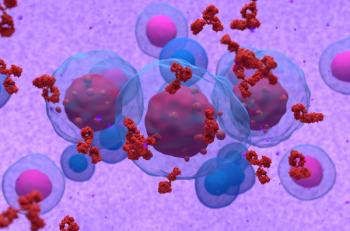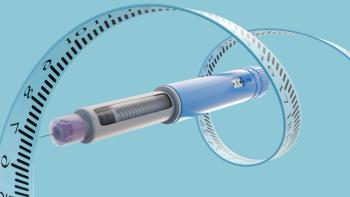
COVID-19 Infection Associated With Higher Likelihood of Developing Myalgic Encephalomyelitis/Chronic Fatigue Syndrome
Key Takeaways
- SARS-CoV-2 infection significantly increases the risk of developing ME/CFS, a complex condition with persistent fatigue and related symptoms.
- The RECOVER trial found a higher incidence of ME/CFS in infected individuals compared to uninfected ones, with post-exertional malaise as the most common symptom.
The finding could help better treat patients with long COVID, as pharmacists and treatment providers can look out for ME/CFS symptoms.
New study results from the RECOVER clinical trial demonstrate that following infection with SARS-CoV-2, the virus that causes COVID-19, patients are at higher risk of developing myalgic encephalomyelitis/chronic fatigue syndrome (ME/CFS), confirming that the condition is a diagnosable sequela following SARS-CoV-2 infection.1
ME/CFS often occurs following a viral infection and is a serious, complex, and chronic condition. It is characterized by new-onset fatigue that has persisted for at least 6 months, accompanied by a series of related symptoms including a reduction in pre-illness activities, post-exertional malaise (PEM), unrefreshing sleep, or cognitive impairment. Patients with long COVID can experience some or all of these symptoms, necessitating further research to examine what may contribute to the development of long COVID.2
In the RECOVER study, investigators are researching the characteristics of long COVID and have noted the overlap of symptoms with ME/CFS. As part of the RECOVER trial, investigators applied clinical diagnostic criteria for ME/CFS to their patient population to determine the incidence of post-COVID-19 ME/CFS among prospectively followed patients within 30 days of infection while comparing this occurrence with patients who did not have a SARS-CoV-2 infection.1
A total of 15,181 people are enrolled in the ongoing RECOVER trial, including individuals with acute infection, post-acute infection, or uninfected. The Patient-Reported Outcomes Measurement Information System (PROMIS) Global Health 10 questionnaire was utilized to assess fatigue severity and physical impairment in patients, while a series of other measurements assessed factors such as sleep habits, malaise, and dizziness after standing.1
At the first study visit at least 6 months following acute SARS-CoV-2 infection, 531 of 11,785 infected patients (4.5%) met ME/CFS diagnosis criteria, while 4692 (39.8%) were ME/CFS-like, meaning they exhibited at least 1 symptom of ME/CFS. Among 1439 uninfected individuals, only 9 (0.6%) met diagnostic criteria for ME/CFS. Further analysis showed that the incidence rate of ME/CFS among those with acute infection was 2.66 (95% CI, 2.63-2.70) per 100 person-years, significantly higher than that of propensity score-matched uninfected participants (0.93 per 100 person-years; 95% CI, 0.91-0.95).1
Study investigators also assessed the ME/CFS symptoms reported by each of the acute infected, post-acute infected, and uninfected individuals. In both acute infected and post-acute infected individuals, PEM was the most frequently reported symptom (15.9% and 29.1%, respectively). Orthostatic intolerance was the next most common symptom, followed by unrefreshing sleep, cognitive impairment, and fatigue, which were reported at similar rates in acute infected patients. Importantly, the investigators found that all ME/CFS symptoms were lower in uninfected patients compared with infected participants.1
In a critical finding, 89% of post-COVID-19 ME/CFS participants met criteria for long COVID, also called post-acute sequelae of SARS-CoV-2 infection (PASC), and most of these patients were assigned to PASC cluster 4, the cluster with the highest frequency of all symptoms including ME/CFS symptoms.1
Some limitations of the trial included the reliance on self-reported patient symptoms and the sporadic nature of ME/CFS symptoms, which can vary in severity and frequency over the duration of illness. The investigators noted that PEM is the “cardinal feature of ME/CFS” and utilized its appearance in patients as an identifying marker for the syndrome, but PEM is inherently a difficult condition to diagnose. Recall bias may have played a role regarding patients reporting potentially inaccurate symptoms or severity.1,2
Overall, the high prevalence of post-COVID-19 ME/CFS indicates a major unmet need among recovering patients following SARS-CoV-2 infection. This rate can be compared to pre-pandemic rates of ME/CFS, which ranged from 0.2% to 1.0% and is comparable to the rate found in uninfected patients in RECOVER. Confirming that ME/CFS can be diagnosable following infection will allow pharmacists to provide more optimized care and symptom management to patients.1,2
REFERENCES
1. Vernon SD, Zheng T, Do H, et al. Incidence and prevalence of post-COVID-19 myalgic encephalomyelitis: A report from the observational RECOVER-Adult study. J Gen Intern Med. 2025. Accessed Online. doi:10.1007/s11606-024-09290-9
2. National Institute of Neurological Disorders and Stroke, National Institutes of Health. NIH-funded study finds cases of ME/CFS increase following SARS-Cov-2. EurekAlert! News Release. Released January 13, 2025. Accessed January 15, 2025. https://www.eurekalert.org/news-releases/1070344
Newsletter
Stay informed on drug updates, treatment guidelines, and pharmacy practice trends—subscribe to Pharmacy Times for weekly clinical insights.
















































































































































































































